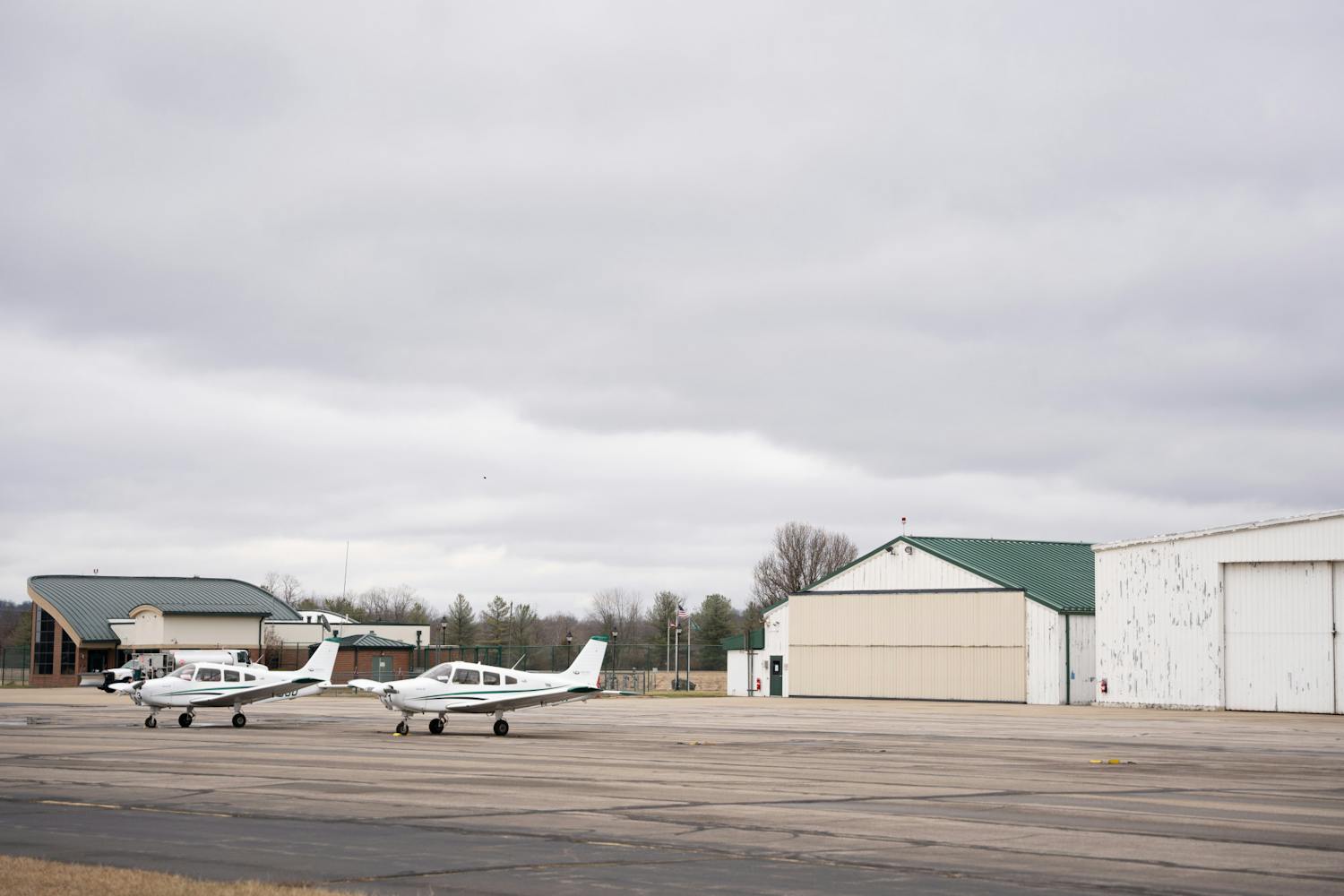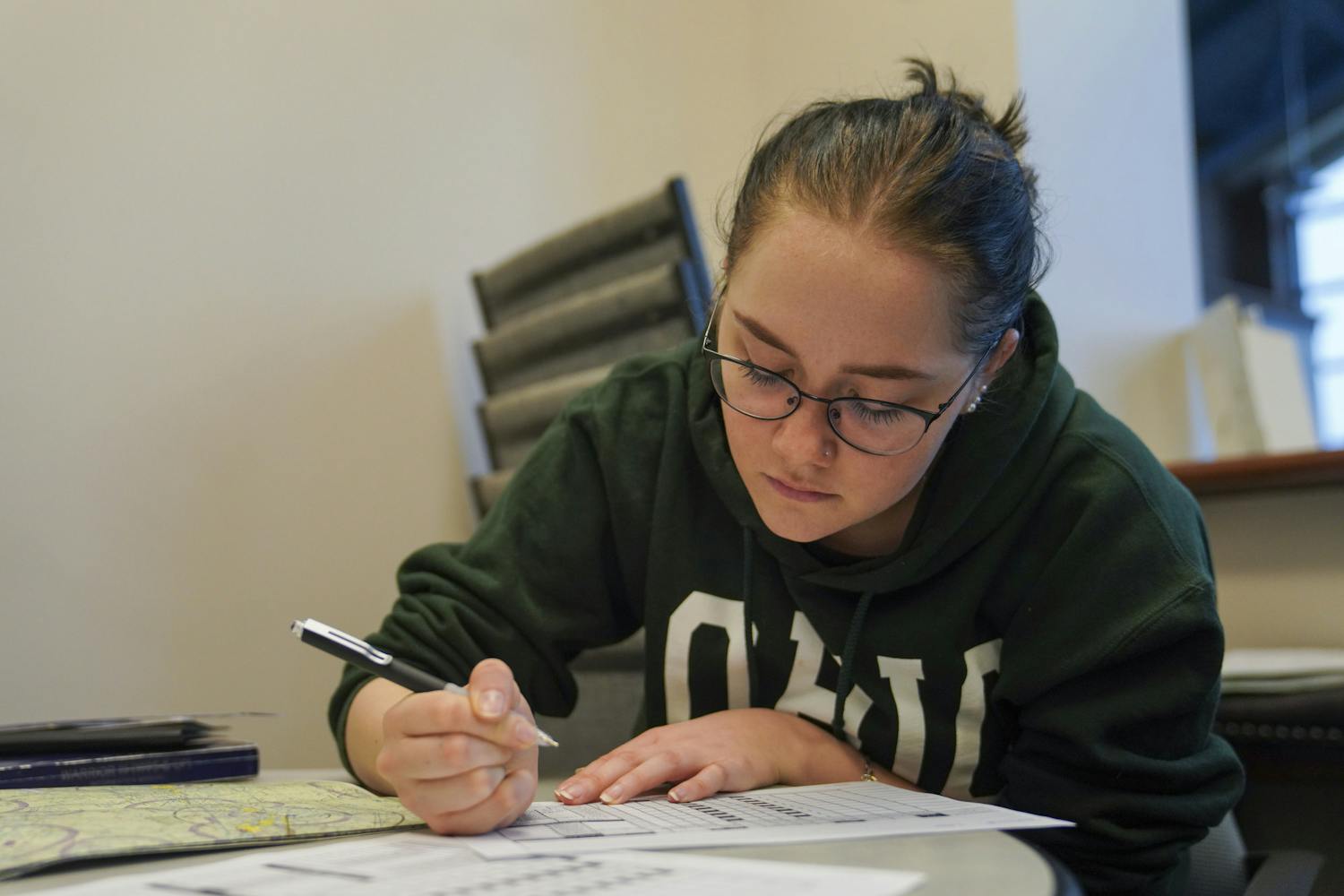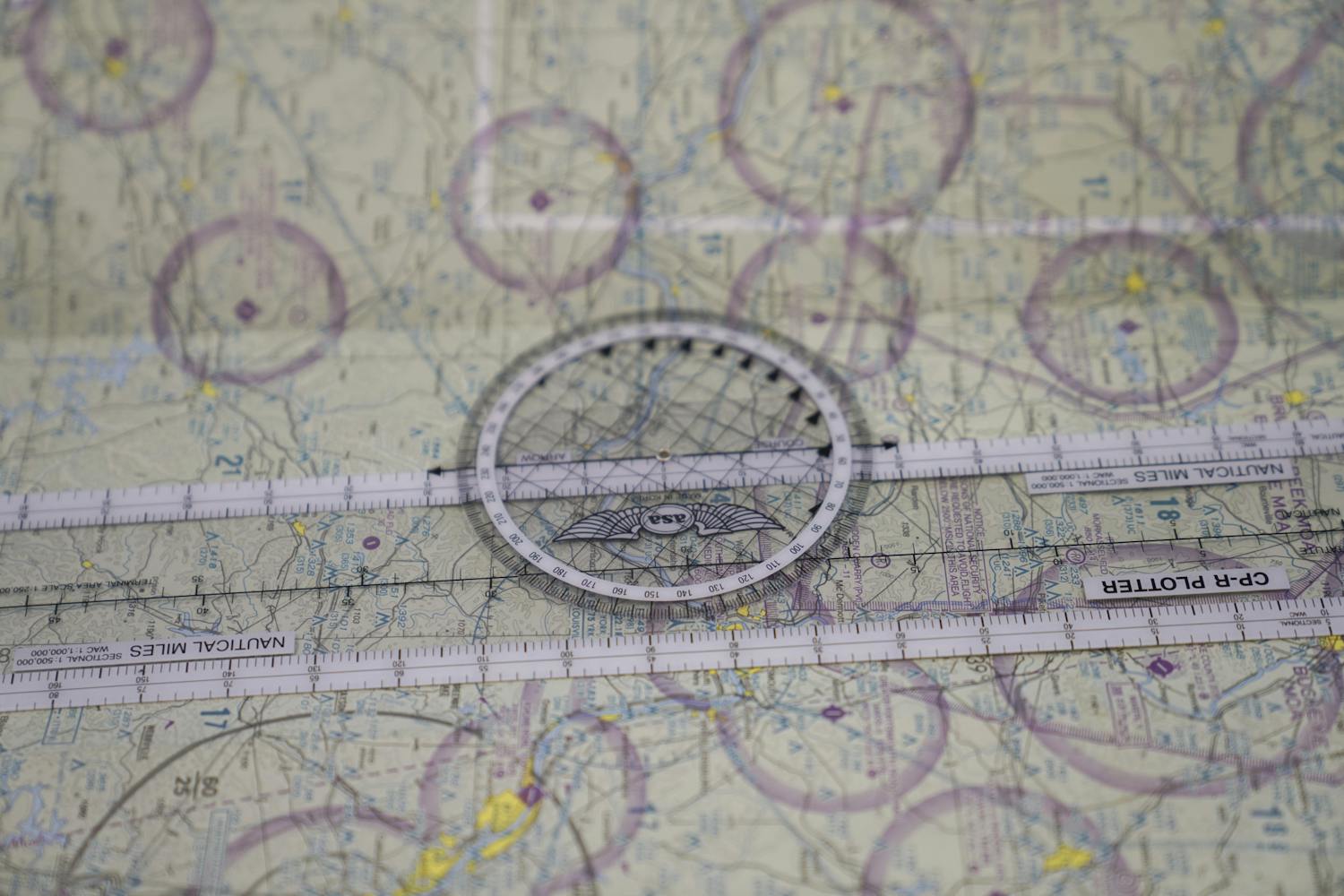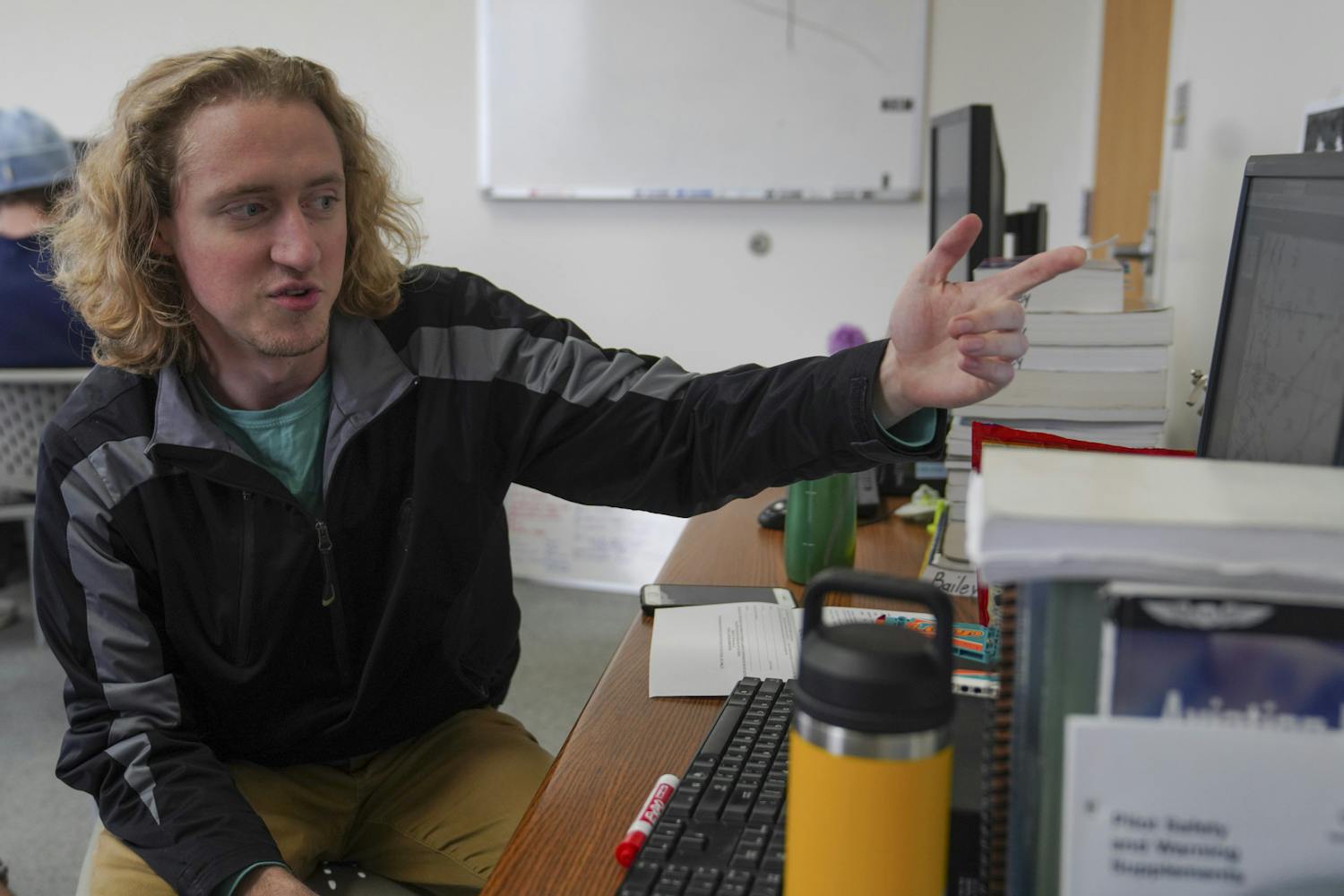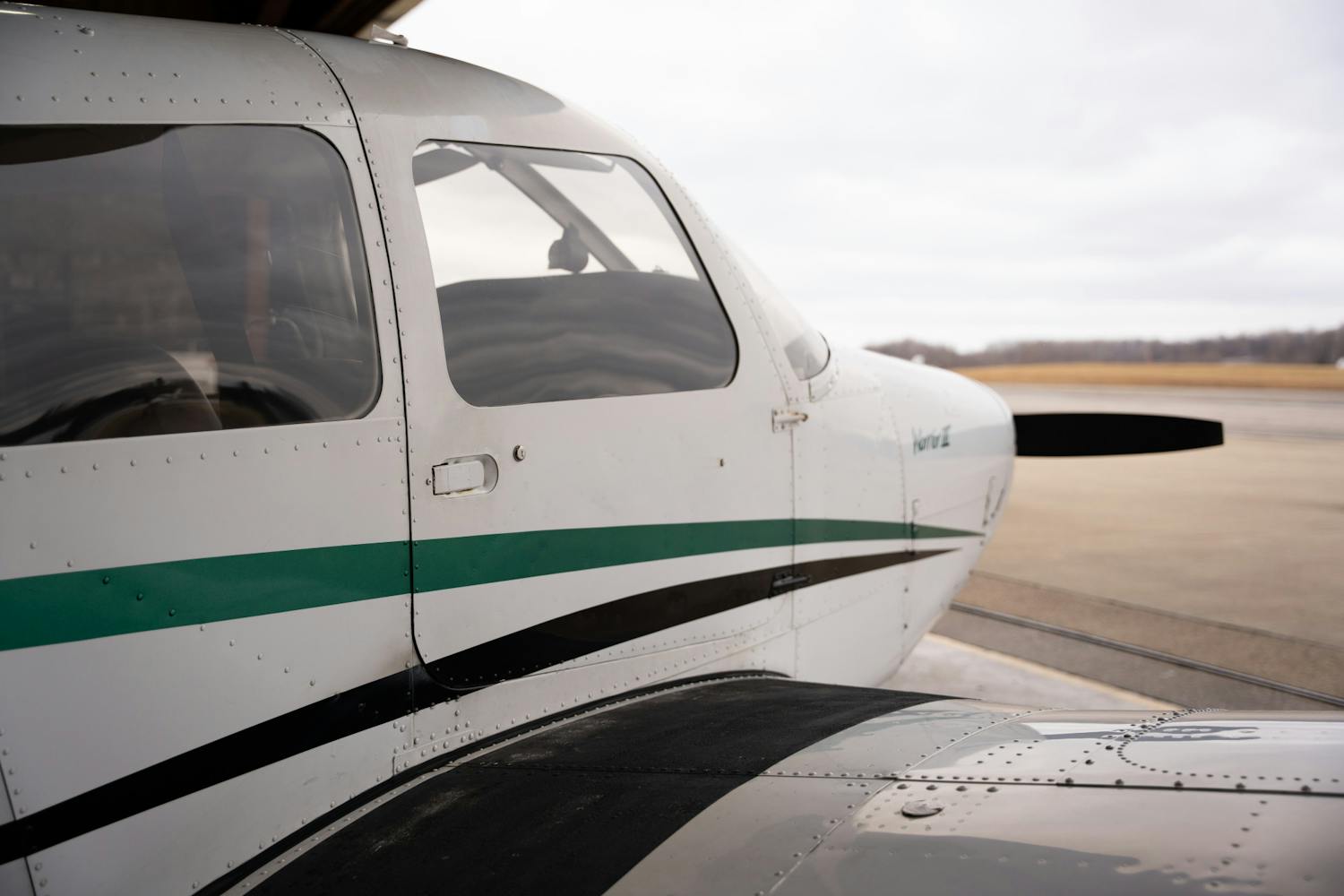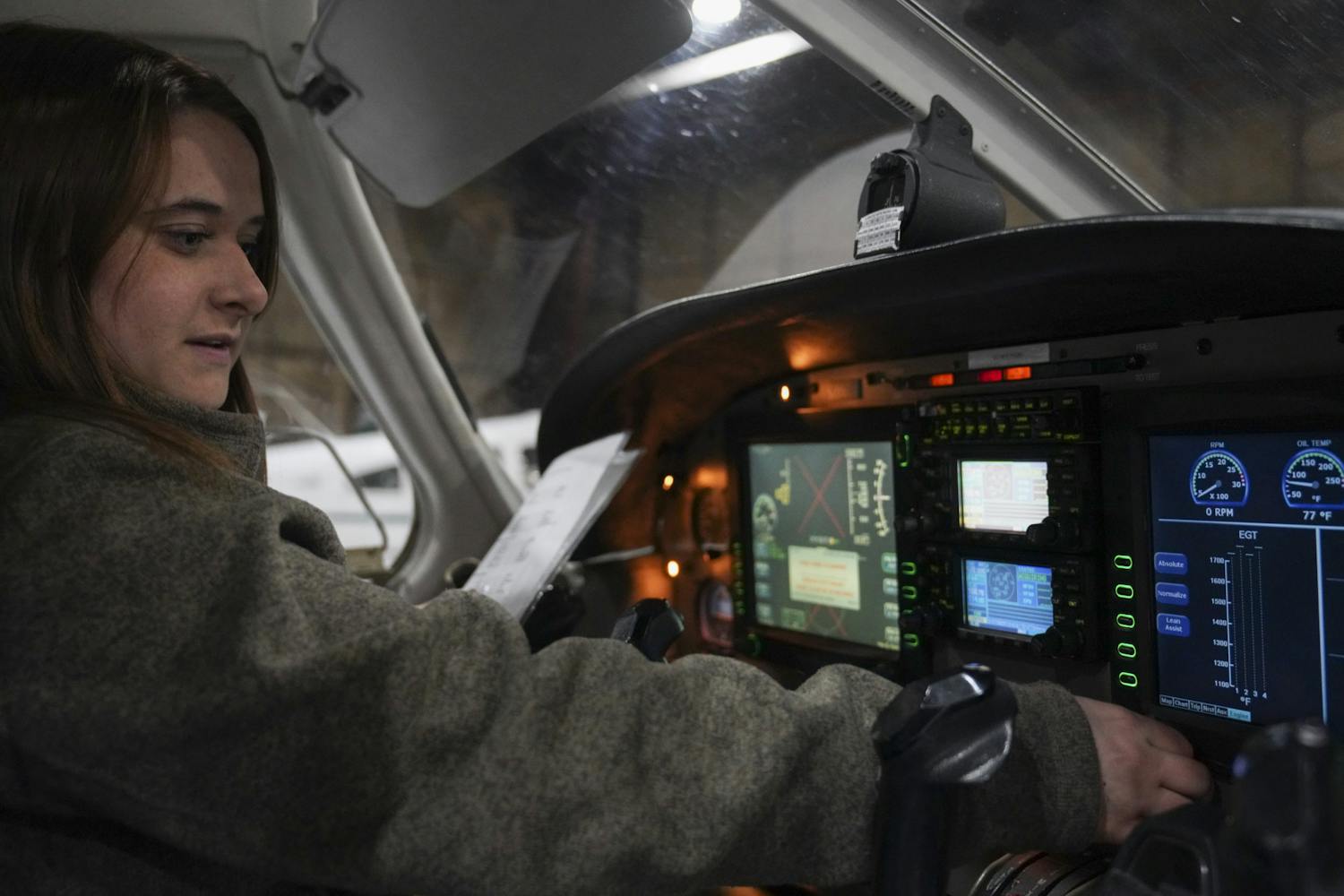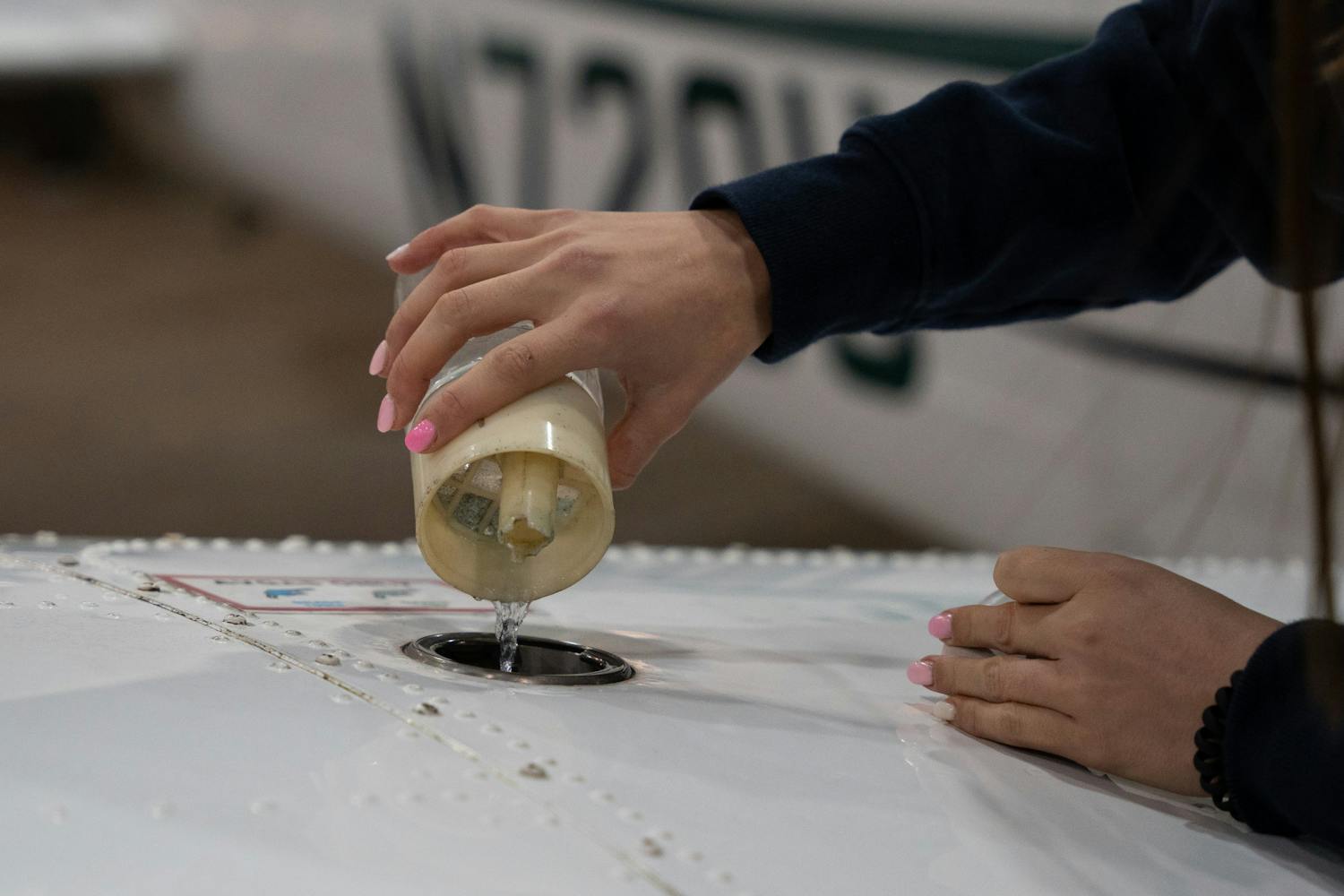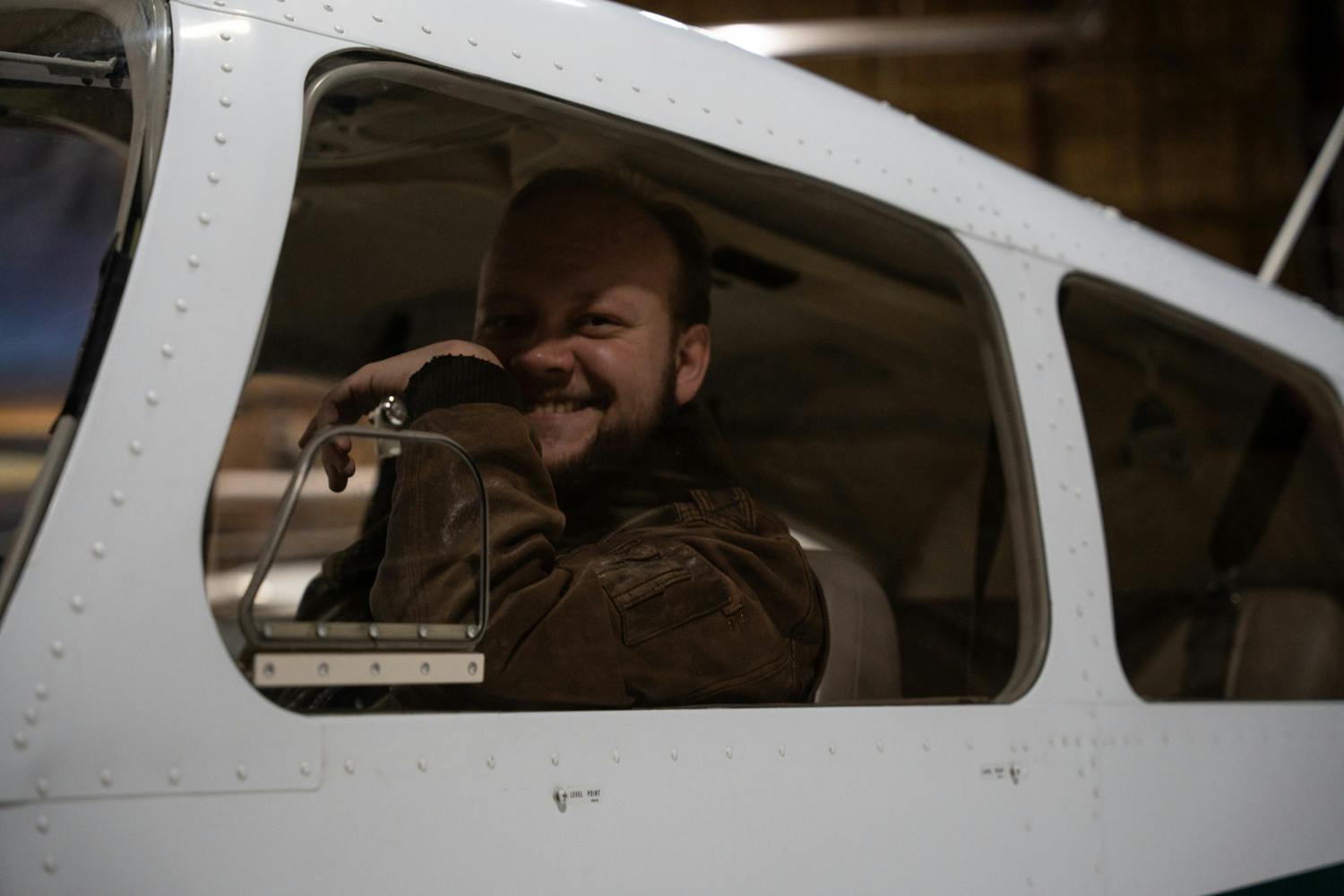Whether over the clouds or on the ground, some Ohio University students are working on becoming the next generation to enter the aviation field.
Through the Russ College of Engineering and Technology, the Department of Aviation has been training future pilots and aviation professionals for over 70 years, according to the department’s website.
George Armann, an associate professor of aviation, grew up in the area and received his bachelor’s degree in aviation from OU. Armann taught and got his master’s degree at Kent State University and after nine years, he is back in his hometown and alma mater.
“My grandfather, he actually got his (pilots) license in World War II here,” Armann said. “He fought for the Army Air Corps. Where Walmart sits now, that’s where the airport used to be.”
Up until November of 1971, the first airport in Athens County was located between East State Street and the Hocking River, according to OU’s Building Directory. Now, the Athens City Recreation Center, the Athens Mall, Kroger and Walmart occupy the area.
OU bought the airport in 1943 and moved its location to 747 Columbia Rd in Albany. The Gordon K. Bush Ohio University Airport and Academic Center, as it is known today, is where students learn how to fly and practice other aviation professions.
“We have 244 total students in the program (and) 198 of those are flight,” Armann said. “The thing that gets weird here, and it’s just a weird number, 74 of those are management. If you’re like … that doesn’t do the math, 28 of them are doing both, so, they’re doing management and flight.”
The three undergraduate programs students can choose from, or complete multiple of, include aviation flight, aviation management and aviation flight technology. Aviation flight and aviation management are both Bachelor of Science degrees and aviation flight technology is a two-year degree program where students earn their Associate of Applied Science degree.
Bailey Price, a senior studying aviation flight, said she chose to go into aviation after originally wanting to be a NASCAR driver.
“That transitioned somehow into aviation,” Price said. “I think when I watched the first ‘Top Gun’ movie … I became obsessed with it, and then I realized, oh, I can go fast in the air in cool planes.”
There are additional fees for certain flight courses and to earn ratings. Flight fees are determined by Parts 61 and 141 of the Federal Aviation Administration Flight Standards District Office and are based on minimum completion times, according to the university’s website.
Part 61 and Part 141 flight instruction are classifications from the Federal Aviation Administration that determine the methods of pilot training, according to Phoenix East Aviation, a flight academy in Florida.
Price said the additional fees that come with being an aviation student can be compared to students who pay lab fees or for extra credit hours.
“It’s pretty much the same thing except our flight courses we have to take to graduate just like our labs,” Price said. “A flight course comes usually with a license or a certificate or a rating added on. So we pretty much have to pay our flight fee for however much it would cost to do that license or rating and then we get our credits once we finish.”
Sometimes, Price also said, it can take more than a semester for students to finish a course that has a license associated with it, which may also add to the number of fees. Armann said it could cost $12,000 for students just to earn their main private pilot license.
Students in the undergraduate flight programs cannot learn to fly alone, bringing in the need for certified flight instructors. Andrew Davis, who graduated from OU with a degree in aviation flight and aviation management in 2022, works as a certified flight instructor, or CFI, at the Department of Aviation. Davis is a CFI and CFII, which means he is a flight instructor for single-engine aircraft and someone who can teach instrument flying, according to ATP Flight School. Davis said the hours students are required to fly add up over time and equip students with different skills.
“You start with your private (license), now being OU’s type of school, it’s a Part 141 school, so you don’t need as many hours as most people would – I think it’s 38 hours, but people usually take more than that,” Davis said. “Usually it’s anywhere between 40 and 60 (hours), and then after you get your private, next thing you work on is your instrument rating, so we fly through the clouds, and that’s a whole other cut of hours and then you get your commercial rating, which allows you to fly for hire.”
Then, Davis also said, students can get their flight instructor, flight instructor instrument and multi-engine ratings. Out of all the lessons OU’s aviation department has taught Davis as a pilot, he also credits the program with teaching him how to be a good instructor.
“I didn’t really think I could be teaching students when I started,” Davis said. “I started from nothing. I didn’t think I could teach people, and now, almost four years later, I’m already teaching.”
The Department of Aviation has a fleet of 17 aircraft made by Cessna, Piper and Beechcraft manufacturers. Price’s favorite plane to fly is one of the two Beechcraft Barons at the airport because it is the biggest and the highest performing. When Price first started flying, she remembers being in the smallest and least advanced Cessna 152.
“The first flight I took, I had this realization that I’m in the air and I’m in a metal tube and it’s moving in the air without a problem,” Price said. “It was just like, ‘This is my lab, I am not sitting in a class.’”
Although it may just appear as a small airport in Albany, Armann said the Ohio University Airport and Department of Aviation are where students are taught and cared for.
“I think the biggest thing that other people wouldn’t realize is that we’re basically a big family out here,” Armann said. “(These are) the people they want to sit next to for eight hours in a cockpit as opposed to some of the other institutions out there because we have the personality, we have the knowledge, we have the skills to be kind of the best in the whole National Airspace System.”


